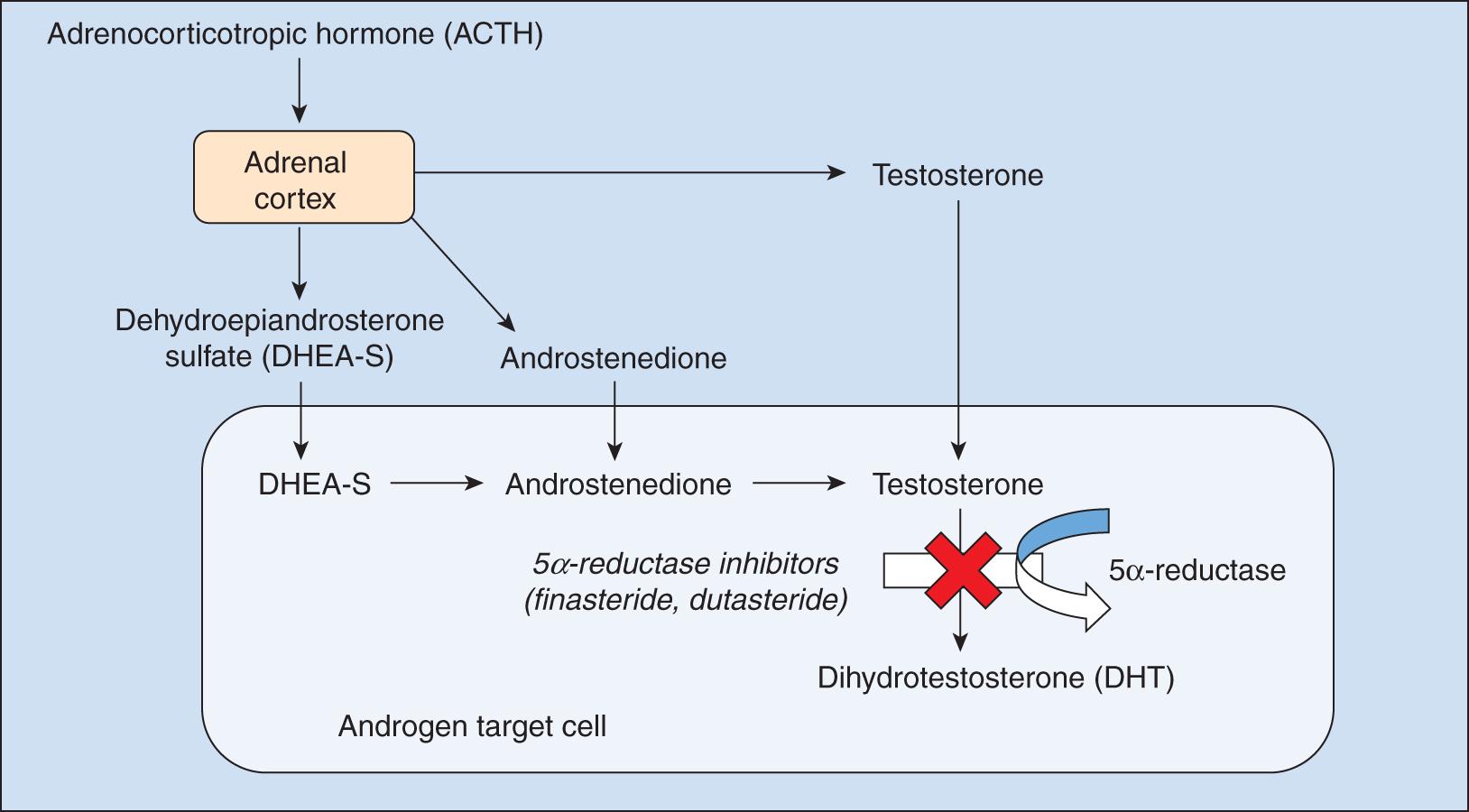Physical Address
304 North Cardinal St.
Dorchester Center, MA 02124
Androgenetic alopecia is the most common cause of alopecia in both men and women; however, approved therapeutic treatment options are limited.
Patients should be counseled that treatment of androgenetic alopecia is directed toward prevention of further hair thinning and loss, as complete hair regrowth may not be achieved.
Topical minoxidil is an Food and Drug Administration–approved, first line treatment for androgenetic alopecia in both men and women. Oral low-dose minoxidil is not Food and Drug Administration approved for the treatment of androgenetic alopecia but may be considered in patients who are unwilling or unable to use the topical formulation.
The enzyme 5α-reductase converts testosterone to dihydrotestosterone, thereby inducing hair follicle miniaturization in androgenetic alopecia. Inhibition of this pathway is the target of the 5α-reductase inhibitors finasteride and dutasteride.
Oral finasteride is a type II 5α-reductase inhibitor that is Food and Drug Administration–approved and a first line treatment for androgenetic alopecia in men. Oral dutasteride is a type I and type II 5α-reductase inhibitor that is not Food and Drug Administration approved; however, it can be considered a second-line treatment for androgenetic alopecia in men.
Topical 5α-reductase inhibitors are a promising area of investigation for the treatment of androgenetic alopecia.
Androgenetic alopecia (AGA) is the most common cause of alopecia in both men and women. Despite its high prevalence, approved therapeutic options for AGA are limited. Treatment of AGA is directed toward prevention of further hair thinning and loss, which can affect both quality of life and self-esteem (level of evidence: 1). , This chapter discusses the U.S. Food and Drug Administration (FDA)-approved treatment options for AGA, including topical minoxidil and oral finasteride. Non-FDA approved treatment options including oral dutasteride, oral minoxidil, and topical finasteride are also discussed.
Minoxidil (Rogaine [topical]), the first FDA-approved treatment for AGA in men and women, was originally developed as an oral hypertension medication. Its possible use in AGA was incidentally discovered as a result of its side effect of increased hair growth. The exact mechanism by which minoxidil promotes hair growth remains unclear, but it is thought to be partly caused by potassium channel opening. Minoxidil is an inactive metabolite transformed into its active metabolite, minoxidil sulfate, by the enzyme sulphotranspherase. Minoxidil sulfate then opens adenosine triphosphate (ATP)-sensitive potassium channels in cell membranes, leading to vasodilation. Other mechanisms by which minoxidil is thought to promote hair growth include stimulation of vascular endothelial growth factor and increased prostaglandin synthesis.
The 5α-reductase inhibitors finasteride (Propecia [oral]) and dutasteride (Avodart [oral]) were initially developed and approved for the treatment of benign prostatic hyperplasia. The enzyme 5α-reductase converts testosterone to the more potent dihydrotestosterone (DHT), which induces characteristic miniaturization of the hair follicles in AGA ( Fig. 8.1 ). There are type I and type II isoenzymes of 5α-reductase, and their expression varies depending on body location. Hair follicles express higher concentrations of the type I isoenzyme, suggesting a key role in androgen-regulated hair growth. , Finasteride is a type II 5α-reductase inhibitor that decreases serum DHT levels by about 65% (see Fig. 8.1 ). In contrast, dutasteride inhibits both type I and type II isoenzymes, further reducing serum DHT levels by 90% (see Fig. 8.1 ). ,

Become a Clinical Tree membership for Full access and enjoy Unlimited articles
If you are a member. Log in here